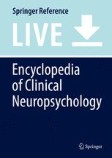Search
Search Results
-
Task-irrelevant optic flow guides attention in visual search
Motion is an important factor in visual information processing. Studies have shown that global optic flow guides attention, but it remains unclear...

-
Confidence in masked orientation judgments is informed by both evidence and visibility
How do human observers determine their degree of belief that they are correct in a decision about a visual stimulus—that is, their confidence?...

-
Continuous flash suppression: Known and unknowns
Studies utilizing continuous flash suppression (CFS) provide valuable information regarding conscious and nonconscious perception. There are,...

-
Representational momentum and anisotropies in nearby visual space
The possibility of anisotropies in visual space in and near the final location of a moving target was examined. Experiments
1 and2 presented a...
-
A few remarks on spatial interference in visual stimuli
Many vision experiments, e.g., tests of masking and visual crowding, involve the effect of adding a second stimulus to an initial one. The effects of...

-
Out of sight, out of mind: Occlusion and eye closure destabilize moving bistable structure-from-motion displays
Our brain constantly tries to anticipate the future by using a variety of memory mechanisms. Interestingly, studies using the intermittent...

-
The involvement of central attention in visual search is determined by task demands
Attention, the mechanism by which a subset of sensory inputs is prioritized over others, operates at multiple processing stages. Specifically,...

-

-
Cognitive load effects on early visual perceptual processing
Contrast-based early visual processing has largely been considered to involve autonomous processes that do not need the support of cognitive...

-
Attention flexibly trades off across points in time
Sensory signals continuously enter the brain, raising the question of how perceptual systems handle this constant flow of input. Attention to an...

-
Going the distance and beyond: simulated low vision increases perception of distance traveled during locomotion
In a series of experiments, we tested the hypothesis that severely degraded viewing conditions during locomotion distort the perception of distance...

-
Perceptual learning with tactile stimuli in rodents: Sha** the somatosensory system
The animal kingdom contains species with a wide variety of sensory systems that have been selected to function in different environmental niches, but...

-
Speeded multielement decision-making as diffusion in a hypersphere: Theory and application to double-target detection
We generalize the circular 2D diffusion model of Smith ( Psychological Review , 123 , 425–451:
2016 ) to provide a new model of speeded decision-making...
-
Cue-target contingencies modulate voluntary orienting of spatial attention: dissociable effects for speed and accuracy
Voluntary orienting of spatial attention is typically investigated by visually presented directional cues, which are called predictive when they...

-
Decoding working memory content from attentional biases
What we are currently thinking influences where we attend. The finding that active maintenance of visual items in working memory (WM) biases...

-
Setting and changing feature priorities in visual short-term memory
Many everyday tasks require prioritizing some visual features over competing ones, both during the selection from the rich sensory input and while...

-
Mixed signals: The effect of conflicting reward- and goal-driven biases on selective attention
Attentional selection depends on the interaction between exogenous (stimulus-driven), endogenous (goal-driven), and selection history...

-
Spatial and temporal aspects of visual backward masking in children and young adolescents
The development of visual functions is very diverse. Some visual functions mature within the first year of life, whereas maturation for other...

-
Inferring the depth of 3-D objects from tactile spatial information
Four psychophysical experiments were conducted to examine the relation between tactile spatial information and the estimated depth of partially...

-
Low-level mediation of directionally specific motion aftereffects: Motion perception is not necessary
Previous psychophysical experiments with normal human observers have shown that adaptation to a moving dot stream causes directionally specific...

